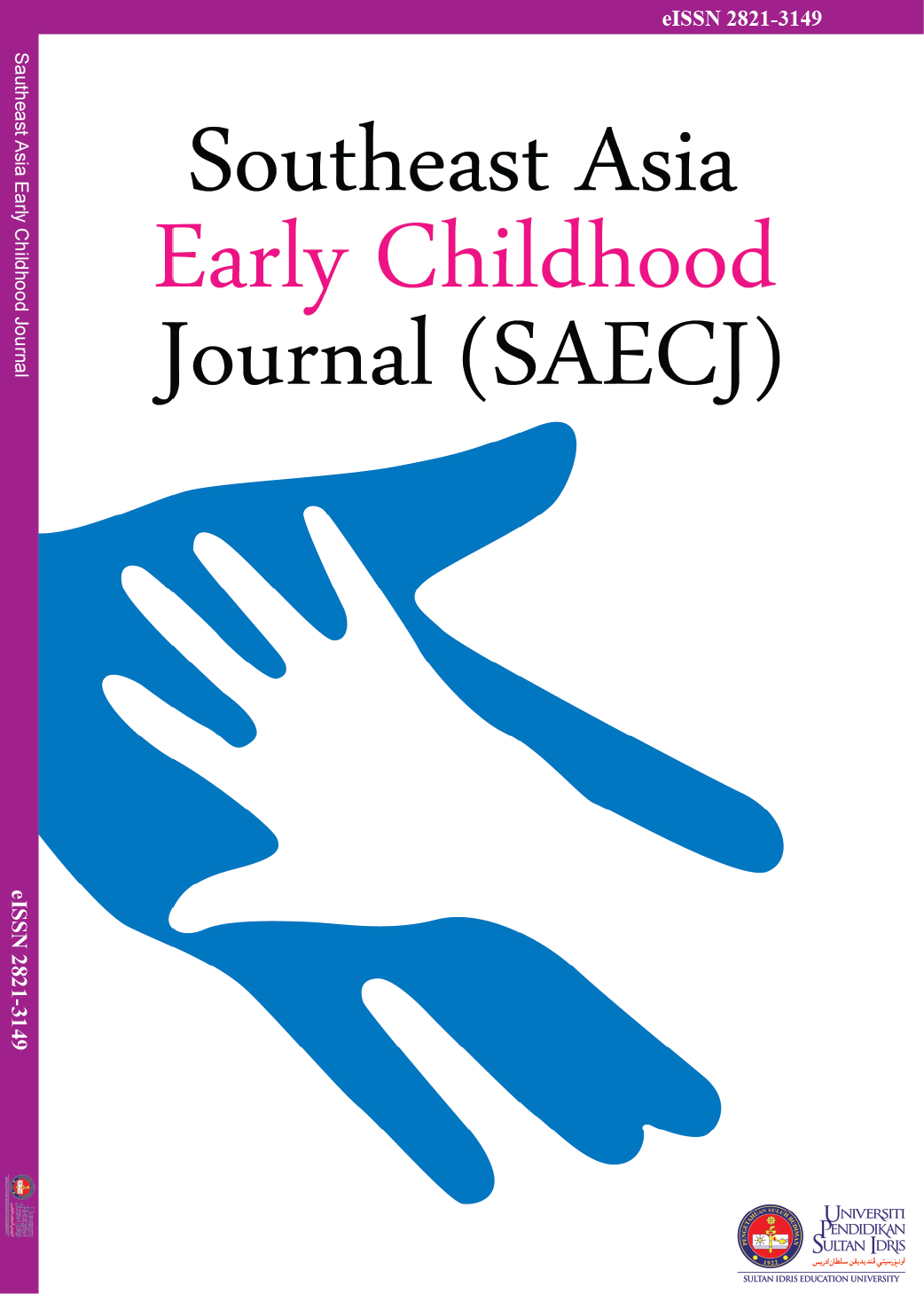Interventions for young readers: A literature review with evidence-based strategies to practice
DOI:
https://doi.org/10.37134/saecj.vol11.1.4.2022Keywords:
language, literacy, evidence-based interventionAbstract
Despite the generally highly individualised educational needs of children, when it comes to reading, three collective patterns of concern tend to arise. Research explicitly highlights the disparity that at-risk children and children with a disability may face in the classroom, as well as the longstanding ripple effects of early language and literacy disadvantage. Stemming from these foundations, the purpose of this literature review is to analyse the impact of literacy intervention strategies on early childhood students in mainstream Australian classroom settings. The paper will utilise formative classroom data in the form of teacher directed lesson observations in a student driven learning setting to obtain evidence of the effectiveness of implemented literacy interventions. Data will be collected through observational notes and a student reading level progression bar graph over a five-week period with literacy intervention lessons being run three times per week for one-hour sessions. There will be a direct emphasis on exploring the importance of primary literacy intervention in the inclusive early learning classroom, with a particular focus on the developmental process of reading in young learners. This review will also explore how the effective development of reading competence shapes learning and social development for years to come; unpacking current research literature and discussing a key selection of evidence-based intervention strategies utilised to bridge learning disparities for young readers.
Downloads
References
Akcay, A., & Okur Akçay, N. (2020). Comparison of conceptual knowledge levels of students who took and did not take preschool education: Example of earth, sun, and moon. Southeast Asia Early Childhood Journal, 9(2), 58-72. https://ejournal.upsi.edu.my/index.php/SAECJ/article/view/3559
Altındağ Kumaş, Özlem, Sümer Dodur, H. M., & Yüzbaşıoğlu, Y. (2021). The impact of the name writing skill in preschool children on print knowledge, alphabet knowledge, and phonological awareness: The case of Turkey. Southeast Asia Early Childhood Journal, 10(2), 147-161. https://doi.org/10.37134/saecj.vol10.2.10.2021
Carmody, R. (2019). Using student goal setting and feedback to encourage independent learning. Australian Art Education, 40(1), 135–154.
Cooper, B., Moore, J., Powers, C. J., Cleveland, M., & Greenberg, M. (2014). Patterns of early reading and social skills associated with academic success in elementary school. Early Education & Development, 25(8), 1248–1264. https://doi-org/10.1080/10409289.2014.932236
Gersten, R., Newman-Gonchar, R., Haymond, K. S., & Dimino, J. (2017, April). What is the evidence base to support reading interventions for improving student outcomes in grades 1-3? Regional Educational Laboratory Southeast. https://files.eric.ed.gov/fulltext/ED573686.pdf
Grøver, V., Uccelli, P., Rowe, M., & Lieven, E. (Eds.). (2019). Learning through language: Towards an educationally informed theory of language learning, 159-169. https://doi:10.1017/9781316718537
Hjetland, H. N., Brinchmann, E. I., Scherer, R., Hulme, C., & Melby-Lervåg, M. (2020). Preschool pathways to reading comprehension: A systematic meta-analytic review. Educational Research Review, 30. https://doi-org/10.1016/j.edurev.2020.100323
Jackson, J. (2018). Build an interactive word wall. The Science Teacher (National Science Teachers Association), 85(1), 42-46. https://doi.org/10.2505/4/tst18_085_01_42
Kozak, S., & Recchia, H. (2019). Reading and the development of social understanding: Implications for the literacy classroom. Reading Teacher, 72(5), 569–577. https://doi.org/10.1002/trtr.1760
Kumaş, A., Dodur, H. & Yüzbaşıoğlu, Y (2021). The impact of the name writing skill in preschool children on print knowledge, alphabet knowledge, and phonological awareness: The case of Turkey. Southeast Asia Early Childhood Journal, 10(2), 147-161. https://doi.org/10.37134/saecj.vol10.2.10.2021
Lanou, A., Hough, L., & Powell, E. (2012). Case studies on using strengths and interests to address the needs of students with autism spectrum disorders. Intervention in School and Clinic, 47(3), 175-182. https://doi.org/10.1177/1053451211423819
Martucci, K. (Ed.). (2016). Shared storybook reading in the preschool setting and considerations for young children’s theory of mind development. Journal of Early Childhood Research, 14(1), 55-68. http://dx.doi.org/10.1177/1476718X14523750
Morrow, L. M., Roskos, K. A., & Gambrell, L. B. (2015). Oral language and comprehension in preschool: Teaching the essentials. Guilford Publications.
NSW Department of Education. (2020). Administration and support in schools. https://education.nsw.gov.au/about-us/careers-at-education/roles-and-locations/roles-at-education/admin-and-support
NSW Department of Education. (2014). Early action for success instructional leader handbook. https://docplayer.net/6098356-Early-action-for-success-instructional-leaders-handbook.html
Rostan. N., Ismail, H., & Jafaar, A., (2020). The use of multisensory technique in the teaching open syllables reading skill for preschoolers from a teachers perspective. Southeast Asia Early Childhood Journal, 9(2). https://ejournal.upsi.edu.my/index.php/SAECJ/article/view/4186/2707
Snell, E. K., Hindman, A. H., & Wasik, B. A. (2015). How can book reading close the word gap? Five key practices from research. The Reading Teacher, 68(7), 560-571. https://doi.org/10.1002/trtr.1347
Spear-Swerling, L., (2015). Common types of reading problems and how to help children who have them. The Reading Teacher 69(5), 513-522. https://doi.org/10.1002/trtr.1410
Strauber, C. B., Sorcar, P., Howlett, C., & Goldman, S. (2020). Using a picture-embedded method to support acquisition of sight words. Learning and Instruction, 65. https://doi-org/10.1016/j.learninstruc.2019.101248
Weiss, L., S., (2013). Learning-related behaviours: Small group reading instruction in the general education classroom. Intervention in School and Clinic, 48(5), 294-302. https://doi.org/10.1177/1053451212472231
Downloads
Published
How to Cite
Issue
Section
License
Copyright (c) 2022 Kaylah Smith

This work is licensed under a Creative Commons Attribution-NonCommercial-ShareAlike 4.0 International License.





